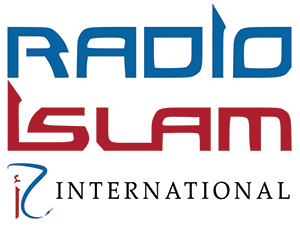The Real Muslim Women
Quick Recap – Hijab is My Choice Vs Hijab is Oppression
The hijab is often misunderstood and politicized, viewed by some as a symbol of modesty and empowerment, and by others as a tool of oppression. It is important that we focus on that binary by centring the voices of Muslim women themselves — those who actually wear the Hijab.
For many, Hijab is a personal and spiritual choice, a form of autonomy that allows them to define their identity and modesty on their own terms. It’s a rejection of objectification and a stand against societal pressures to conform to certain beauty standards.
My Hijab, My Identity
In a world that often tells women how to dress, how to act, and how to be seen, the Hijab stands as a powerful, complex symbol. For many Muslim women, it’s more than a piece of cloth — it’s an extension of who they are. It’s not just about modesty or religious obligation. It is also about faith, culture, and self-expression. It is, in every sense, identity woven into fabric.
The phrase “My Hijab, My Identity” speaks to something deeply personal. It is a statement of ownership, of meaning, and of pride. It’s a response to both internal expectations and external misconceptions. It is a reclaiming of narrative.
A Reflection of Faith
For most women who wear the Hijab, the journey begins — or continues — with faith. Hijab is often observed as an act of obedience to God, rooted in verses of the Qur’an and the teachings of the Prophet Muhammad (peace be upon him). But beyond its textual basis, Hijab becomes a living, breathing symbol of devotion. It is an outward reflection of an inward commitment.
Wearing the Hijab is often described by Muslim women as a daily reminder of their relationship with Allah. In moments of strength, it becomes a shield of dignity. In moments of weakness, a call back to purpose. It aligns with a broader spiritual path — one of modesty, humility, and consciousness.
But just like faith itself, the Hijab is deeply personal. No two women experience it in exactly the same way, and the reasons they wear it can evolve over time — growing in meaning, or changing with circumstance. And that evolution, too, is valid.
A Link to Culture and Heritage
The Hijab is not only rooted in religion, but also shaped by culture. Across the Muslim world — and in diaspora communities — Hijab takes on different styles, names, and forms. From the turban wraps of North Africa to the flowing abayas of the Gulf, to the vibrant prints in parts of West Africa, Hijab is often a celebration of heritage as much as it is a practice of modesty.
Even within one country, or one family, hijab can look different — and feel different. That diversity is something to be embraced, not judged.
For many Muslim women, Hijab is also a way of holding onto culture in spaces that try to erase it. It becomes an anchor — a way of saying, “I know who I am, even if the world around me doesn’t understand.”
A Constant Identity in a Shifting World
In a world that is constantly shifting — with social trends, pressures, and ideals — the Hijab offers many Muslim women a sense of stability and grounding. It becomes a part of who they are, even when they are still figuring out everything else. It’s not always easy. There are stares, questions, assumptions. There is judgment — from outside the Muslim community and sometimes from within.
But even through struggle, the Hijab becomes a powerful companion in the formation of identity. It teaches confidence, resilience, and strength. It pushes women to define themselves on their own terms, rather than letting others do it for them.
At its core, “My Hijab, My Identity” is not a slogan — it is a lived reality. One that carries layers of meaning, experience, and emotion. It is a journey that is both deeply personal and widely shared. A journey filled with moments of pride, struggle, beauty, doubt, and growth.
Whether worn from a young age or adopted later in life, Hijab becomes part of the story a Muslim woman tells the world — not because she is forced to, but because it reflects who she is.
And that, in a world full of noise, is one of the clearest expressions of identity there is.





0 Comments